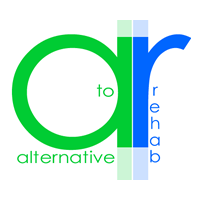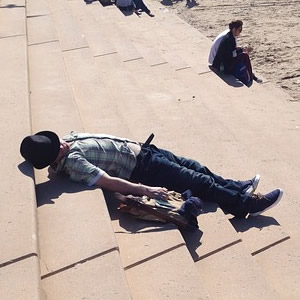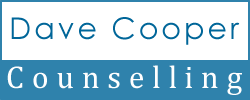


A2R Blog – The cycle of addiction
 Hi. Thanks for taking the time to read this. We are on a journey of change from an unhealthy pattern of ‘exits’ from our life to a healthier pattern of facing and processing difficulties. How do we do this exactly? Today I want to give you a method of working with your weakness! By the time you have read this you will have a better grasp on what is going on during your cycle of addiction!
Hi. Thanks for taking the time to read this. We are on a journey of change from an unhealthy pattern of ‘exits’ from our life to a healthier pattern of facing and processing difficulties. How do we do this exactly? Today I want to give you a method of working with your weakness! By the time you have read this you will have a better grasp on what is going on during your cycle of addiction!
To understand this cycle of addiction we should first place it in a context. I want you to think of your time in active addiction. This may be unpleasant and you may be trying to get away from these times and thoughts, but we need to apply a recovery principle here.
Recovery principle – We learn more from our failures than our successes (see ‘the recovery box’ podcast for more on this)
We want to feel better and so we would rather focus on our successes but all the learning is in the failure! I often put it this way to my clients
“Your life is like a house with a lovely looking front garden with sweet smelling roses, we can spend our time there and it will feel great, but we need to be in the back garden where it is a mess and it stinks. If you are brave enough to go there I will go with you”
So how does this apply to this cycle idea? Your cycle is part of your failure to recover. It is the cyclical process by which your addiction kept you trapped. And you need to understand it in order to break it!
Like any chain we break it at its weakest point. But first we need to draw it.
Take a blank page and draw a circle as big as the page will allow. If you think of this as a clock face then start at 12 o clock and go around clockwise. Here are a few questions to ask yourself before you start.
1 How long does it take to get around my cycle? If you start at 12 o clock from the day that you are at your best, maybe clean and sober and wanting to do better, how long does it take you to get back to that day? So this would include all your effort, all your mistakes, all your frustration, all your using, all your drying out period. We need the complete cycle, this may last several months in some cases. If you are a binge drinker you may go six months between drinks, you may then drink for a week and then spend several weeks in hospital. If you are a drug user your cycle may be much shorter. If you are a gambler do not include paying back any moneys, just go up to the day you decide to get better. If you are addicted to internet porn your cycle could be 24 hours or less.
2 What is my main focus? There are several forms this cycle drawing could take. It is all useful and you could complete several versions with different information on each. For instance your first cycle may mainly be about when you are feeling good and when that changes and you started to struggle, or it may just be about your using time. Whichever one you look at it is important that you raise your awareness (See ‘AAA’ podcast for more details)
3 At what point could I change this cycle? Look for the weak point, that moment where you feel you could break this chain (See ‘the moment of temptation’ podcast for more on this)
Now draw your cycle, divide the circle up into hours, days weeks or months, whichever is appropriate for your length of cycle and then just start adding information as it comes to you. Use different colours if you have them and start again if it gets too full, but keep all the versions! When you have finished, do another from a different point of view such as positivity or resentment levels or relationship quality etc.
How does this help? Once you have this information you can start to know yourself better, your weaknesses and your strengths. You are less likely to fall into traps and walk into difficulties because you start to see them coming. Later, all this information will be useful as you look into your past more deeply through one form of therapy or another.
Of course, like all these processes it is the commitment to practice that counts, not just the knowledge. I hope that helped you. Please email me with any questions.
Thanks again for taking the time today.

A2R Blog – The moment of temptation
Hi. Thanks for taking the time to read this. We are on a journey of change from an unhealthy pattern of ‘exits’ from our life to a healthier pattern of facing and processing difficulties. How do we do this exactly? Today I want to give you more of an understanding of the compulsive side of addiction! By the time you have read this you will have a better grasp on what is going on during those moments of temptation!
To understand this moment of temptation we should first place it in a context. If we think of addiction as a form of OCD, then we have two sides, the obsessive side and the compulsive side. The obsessive side is the part of addiction that will not let you alone, dogging your thoughts and affecting your state and feelings. The compulsive side is what we want to look at today, this is the moment of temptation, it is that moment when a bad idea becomes a ‘good idea’, when something you are not going to do becomes something you are going to do. This is compulsion.
So what is happening at this moment? What can turn a bad idea into a good idea? Well the best way to understand this moment is to take a look at what just happened. If you look back you will find something that you could not cope with. This could be a few moments before the temptation/compulsion or it could be up to a few hours but the important thing is that if you open your mind to this idea you will see it very quickly.
Remember that our process is Awareness Acceptance and Action. So first make up your mind to raise your awareness, allow yourself to know what bothers you, what upsets you, what you do not want to deal with. It is in this area that your moment of temptation was created.
We now need to connect to the general concept of ‘exits’. Without an exit you would not have addiction or moments of temptation.
So here is the process, we first develop gaps in our awareness because we do not want to face or deal with certain things. These become ‘blind spots’ and include things like resentments and fears, offences and shame. Next we come up against these things as part of our day, we cannot avoid them. Finally we have a moment of temptation as we look for an ‘exit’ from our life following this moment. What often happens next is more drug use, or at least a time of desperate fighting off temptation.
It may shock you to think that you could keep such secrets from yourself but believe me it is very common amongst addicts. It develops over many years and drugs and alcohol as well as gambling and internet gaming provide exits that seem to work so well in the early days that it feels like you have your answer! Of course this leads to even more ability and practice at hiding these things from ourselves.
I have worked with lots of people who have said to me things like “it just comes on me and I can’t fight it” or “I was doing so well and then I blew it”. These people did not know yet what they were up against. They were fighting the invisible man!
So what is the solution? How do we begin to deal with this in our life? Let me give you a process;
1 Make a commitment to AAA (awareness acceptance and action) See the blog/podcast.
2 When the moment of temptation happens, ask yourself “what just happened that I can’t cope with”?
3 Take the resentment/fear/shame you just discovered and tell someone.
4 Make a note of any ‘themes’ emerging in your experience and take them into any counselling/mentoring you have.
It is at the first step that we do the commitment work. It is at the second step we do the brave work of allowing ourselves to know things. It is at the third step we do disarming work of sharing and t is in the fourth step we do the deeper work of therapy.
Of course, like all these processes it is the commitment to practice that counts, not just the knowledge. I hope that helped you. Please email me with any questions.
Thanks again for taking the time today.

A2R Blog – The Recovery Box
Hi. Thanks for taking the time to read this. We are on a journey of change from an unhealthy pattern of ‘exits’ from our life to a healthier pattern of facing and processing difficulties. How do we do this exactly? Today I want to give you a method of how we can...
A2R Blog – Addiction – A problem or a weakness?
Hi. Thanks for taking the time to read this. We are on a journey of change from an unhealthy pattern of exits from our life to a healthier pattern of facing and processing difficulties. How do we do this exactly? Today I want to give you a better understanding of how we connect or construct the meaning of our issues. By the time you have read this you will have a better grasp on how your mind works and have a better way forward in your recovery, enjoy!
Let’s start with a question. When you think of your issue, drugs, alcohol, gambling etc. do you think of it as a problem or a weakness? This may seem trivial to you but let me explain. The chances of achieving a recovery from your issues will be greatly increased if you think of them as your weakness, not your problem!
I work with addicts of all sorts and I always encourage them to see things this way. Actually anyone who enters addiction counselling should soon discover this for themselves anyway because it should soon become very clear as part of the therapy. A typical example would be someone who entered treatment for alcohol and discovered as part of that treatment that their problem was their relationship with their Mother.
Now let’s look at the psychology of this idea. To do this we need to understand a bit more about how the mind works. Stick with me through this even if it’s not your interest. There is only one way to instruct the mind, yes that’s right, only one way. It’s all about attention, the phenomenon of attention, and it’s hugely important to human beings and their experience. Basically, you can tell your mind to give something attention or….. well nothing else really?!?
Think of it like being in a dark room with a torch, whatever you shine the torch on is the thing you are giving attention to, the table or the door handle, everything else is there it’s just that they are not getting any attention. So if all you can do is turn on the attention, or turn it off by giving attention to something else we can discount the positives and negatives! Hang on, what does that mean? It means that saying yes or no to your mind makes no difference!
If I say to you “don’t think about Micky Mouse” what comes into your mind? Exactly! You see what your mind heard was “think about Micky Mouse” or, even better “Micky Mouse” the instructions don’t really matter.
So, how does this help me stay sober, I hear you ask. Well, if you think of alcohol as your problem, well, a problem has to be solved doesn’t it? And to solve it you have to give it attention, don’t you? So remember, the though “I must not drink” and the thought “I must drink” are the same to your mind! One good way of understanding this is to think of your attention as being ‘stuck’ to your problem.
When we shift to an understanding of alcohol as our weakness and other things (that we have been avoiding) as our problem, we have a very different construction. Of course we need a lot of support to spend time thinking about our real problems (why do you think you have been drinking so much)? Let me refer you to the ‘AAA!’ blog posted on this site.
So what is a weakness? Well, in this context a weakness is something that offers you an ‘exit’. Because of your brain chemistry, or because of your background or your imagination, this thing has an effect on you that it does not have on other people. So we need to understand ‘exits’ a little more.
An ‘exit’ in this context is just what it sounds like. If the building is your life then the ‘exit’ is a door out of your life! Maybe only for an hour or two (sometimes longer) but the important part is that you get to be free of whatever it is that makes it seem very difficult to be you. This could be all sorts of things of course but we can generalise it as ‘your pain’. If your pain is very heavy, the exit will feel like putting it down for a while.
So I hope you are getting a picture now of the relationship between your weakness and your problem. Now that I have explained this a little, let me give you a typical example of what I see every day in my practice. A client comes to me with a ‘problem’ which they describe as ‘drinking too much’, they have been ‘trying’ around this problem but with no or limited success. At this stage they cannot see that this ‘problem’ is being made worse by all the attention it’s getting, nor that their real problem is getting no attention at all. In fact they are usually not wanting to see their real problem and spend a lot of energy trying not to give it attention, and when it gets too bad and they are feeling the consequences of avoiding the problem, which is often depression, or anger, they go for the ‘exit’ as a way of managing the pain and round we go again!
Clients are often amazed to find that we spend almost no time looking at their ‘problem’. I want to give their ‘weakness’ as little attention as possible, although there are often valid reasons for spending some time on it. What we do instead is get straight to the actual problem as fast as we can through the building of the relationship between us. This is basic counselling which tells us that no one is going to start talking about the real problem until there is a lot of trust in the room.
So, what have we learned here? Your addictive behaviour is a weakness, and you do it because it gives you an exit, which you need because you are not facing your problem! This is why we always start with raising awareness (see AAA! On this blog).
Hope that helped you. Please email me with any questions.
Thanks again for taking the time today.
